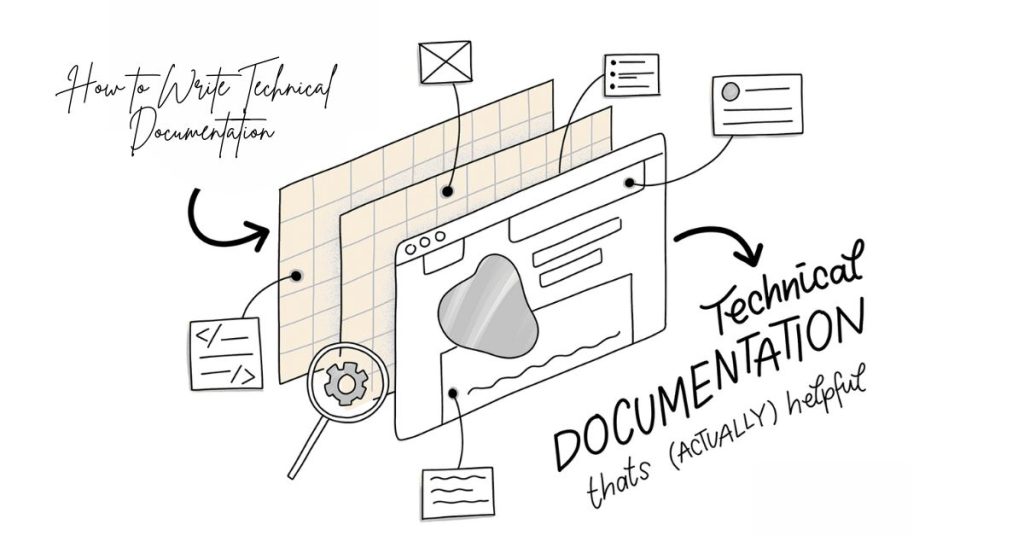The way we work has changed forever. Remote work is no longer just a temporary solution—it has become the standard for many modern businesses. But while remote teams enjoy flexibility and access to global talent, they also face one of the toughest challenges: building and maintaining a strong company culture without sharing the same physical space.
Company culture isn’t about ping-pong tables or free coffee anymore. In a distributed setting, culture is the glue that holds people together. It defines how employees connect, collaborate, and feel a sense of belonging despite the distance. A strong remote culture helps teams trust each other, align with shared values, and stay motivated even when working across time zones.
However, creating this kind of culture requires more than occasional video calls or virtual happy hours. It takes intentional strategies, clear communication, and consistent reinforcement of values. When done right, remote culture becomes the heartbeat of your organization—fueling productivity, engagement, and long-term success.
In this guide, we’ll explore why remote culture matters, the challenges businesses face when building it, and practical steps you can take to create a culture that not only survives but thrives in a remote-first world.
Why Remote Culture Is Critical for Distributed Teams

A strong remote culture is more than just a “nice-to-have”—it’s the foundation of a thriving distributed team. When employees are spread across different cities, countries, or even continents, culture becomes the invisible thread that ties everyone together. Without it, teams risk becoming disconnected, unmotivated, and less productive. Here’s why remote culture is so critical:
Builds Trust and Belonging
In traditional office settings, trust often grows naturally through face-to-face interactions—coffee breaks, hallway conversations, or quick check-ins at someone’s desk. Remote teams don’t have that luxury, which means trust must be built intentionally. A healthy remote culture creates space for transparency, respect, and inclusivity. When team members feel heard and valued, they develop a stronger sense of belonging. This belonging is essential for combating feelings of isolation and ensuring that every employee feels like a vital part of the organization, no matter where they are.
Improves Communication and Collaboration
Distributed teams rely heavily on communication tools like Slack, Microsoft Teams, or Zoom. Without clear cultural practices, messages can be misunderstood, and important information can get lost. A well-established remote culture sets the tone for how and when to communicate, balancing asynchronous updates with real-time discussions. It helps employees know when to collaborate, when to work independently, and how to share information efficiently. This structure not only prevents confusion but also ensures smoother collaboration across time zones.
Boosts Engagement and Retention
Engaged employees are more productive, creative, and loyal to their organizations. In a remote environment, culture plays a key role in keeping people connected to the company’s mission and values. When employees feel engaged, they are less likely to experience burnout or look for opportunities elsewhere. A strong culture fosters enthusiasm for the work being done, builds emotional connections with colleagues, and reinforces the idea that everyone is contributing to something meaningful. This directly impacts retention, saving companies the cost and disruption of constant turnover.
Drives Performance—and Retention
Remote work gives employees freedom, but it can also blur boundaries and make accountability difficult. That’s where culture steps in. A strong culture provides a framework that keeps employees aligned, motivated, and accountable to shared goals. It sets expectations, encourages ownership, and drives high performance. And when employees see that performance is recognized and rewarded fairly, they are more likely to stay with the company long-term. Simply put, a positive remote culture doesn’t just improve how people feel at work—it directly impacts business outcomes.
Challenges of Building a Remote Culture

Building a strong culture in a remote-first workplace is not without its challenges. Unlike traditional office environments where culture can naturally develop through daily interactions, remote teams must overcome physical distance and the lack of shared spaces. Here are some of the most common obstacles companies face when trying to create and sustain a remote culture:
Limited Organic Connection
In an office, culture often thrives on spontaneous interactions—chatting in the break room, celebrating small wins together, or simply working side by side. These informal moments create bonds that strengthen relationships and make teamwork feel natural. Remote teams, however, don’t get these organic opportunities. Without deliberate efforts to replace them, employees may feel like they are working in silos, disconnected from their colleagues and the company as a whole.
Communication Gaps
When a team is spread across different time zones and relies heavily on digital tools, communication becomes more complex. Messages can be misinterpreted, important details can be overlooked, and sometimes, employees feel left out of critical conversations. If not addressed, these communication gaps can lead to frustration, duplicated efforts, and misalignment with company goals. Establishing clear communication norms is essential, but it takes time and intentional effort.
Isolation and Burnout
Remote work can blur the boundaries between professional and personal life. Without the structure of a physical office, employees may overwork themselves, struggle to disconnect after hours, or feel increasingly isolated from social interactions. Over time, this isolation can lead to burnout, decreased productivity, and even mental health challenges. Culture plays a key role here—companies must create an environment where well-being is prioritized and team members feel supported both personally and professionally.
Inconsistent Reinforcement
In an office setting, company values are often reinforced through everyday behaviors, leadership visibility, and shared rituals. But in a remote setup, if leaders aren’t consistent in communicating and practicing company values, those values quickly fade into the background. Without continuous reinforcement, employees may lose sight of the mission, leading to misaligned priorities and weakened trust.
Lack of Visibility and Recognition
One of the biggest struggles in remote work is visibility. Employees may feel like their hard work goes unnoticed simply because managers can’t “see” it happening in real time. This lack of recognition can harm motivation and engagement. Celebrating achievements, both big and small, becomes even more important in a remote culture. Without intentional recognition practices, employees may feel undervalued, which ultimately affects retention and overall performance.
Real Examples of Remote Culture in Action
Learning from companies that have already mastered remote culture can help you understand what works in practice. These organizations don’t just talk about culture—they live it every day, even without physical offices. Here are some real-world examples that showcase how distributed teams can thrive with the right strategies:
GitLab: Document Everything, Trust Deeply
GitLab is one of the largest fully remote companies in the world, with thousands of employees spread across multiple time zones. Their culture is built on the principle of “handbook-first” documentation. Every process, guideline, and policy is documented and accessible to everyone. This eliminates ambiguity, ensures transparency, and empowers employees to work independently. By trusting team members to find answers and take ownership, GitLab fosters a culture of accountability and trust that scales globally.
Remote.com: Celebrate Connection, Not Just Completion
Remote.com, a platform that helps companies hire international talent, emphasizes the human side of remote work. They understand that culture isn’t just about hitting deadlines—it’s about people feeling connected. Through regular team-building activities, wellness initiatives, and recognition programs, Remote.com ensures employees feel valued beyond their productivity. This focus on connection helps reduce isolation and builds a more engaged, loyal workforce.
Buffer: Prioritize Psychological Safety at Scale
Buffer, a fully remote social media management company, places a high priority on psychological safety. Their culture encourages openness, vulnerability, and trust among team members. For example, employees are encouraged to share not only their work wins but also their challenges. This transparency normalizes struggle and fosters a supportive environment where people feel safe to take risks, ask questions, and grow without fear of judgment. It’s a powerful approach that has helped Buffer maintain high engagement across distributed teams.
Zapier: Automate the Boring, Celebrate the Human
Zapier has built its culture around making work smarter, not harder. As a fully remote automation company, they leverage tools and workflows to eliminate repetitive tasks. This focus allows employees to spend more time on meaningful work and collaboration. But Zapier also emphasizes the human side of work—celebrating achievements, creating space for fun, and recognizing employees for their contributions. By automating the mundane and spotlighting the human, Zapier strikes a balance that keeps employees motivated and connected.
Building an Awesome Remote Culture That Actually Sticks (with Corexta!)
Creating a remote culture that truly endures takes intentional effort, consistency, and the right tools. Here’s how you can bring each strategic pillar of your outline to life—supercharged by Corexta’s capabilities:
1. Make Your Company Values More Than Just Wall Art
Values need to be lived, not just displayed.
Use Corexta’s HR and onboarding modules to embed values from day one, guiding new hires through what the company stands for while they complete their profiles and policies.
Turn values into behaviors by leveraging Corexta’s task and project management workflows that align tasks with value-driven goals—creating consistency and reinforcement over time.
2. Nail Your Communication Flow: Balancing Async and Sync
Communication needs clarity and rhythm in remote settings.
Corexta offers integrated internal chat, real-time notifications, and integrations with tools like Slack, ensuring that teams can message or alert each other as needed—enabling both quick async updates and smooth transitions to live discussion when required.
Establish clear guidelines in Corexta for when to use chat versus video calls or written updates—making communication predictable and aligned.
3. Build Real Connections, Intentionally
Remote teams need curated moments of real human connection.
Schedule regular check-ins or social events using Corexta’s event and meeting coordination features, ensuring that virtual watercooler moments are built into routines.
Align with expert advice that emphasizes creating human-first, empathetic interactions to foster belonging and engagement—even when “offices” are spread across time zones.
4. Shine a Spotlight on Wins (Big and Small!)
Recognition is a critical motivator, especially when working remotely.
Use Corexta’s notifications, messages, or HR tools to publicly celebrate accomplishments—from completing major milestones to positive client feedback. This builds morale and reminds team members that their work is seen and valued.
Complement this with best practices: frequent, meaningful recognition builds loyalty and belonging.
5. Build That Trust Factor: Psychological Safety Is Key
Trust is the cornerstone of effective remote collaboration.
Corexta’s transparent project tracking, task assignments, and attendance features create visibility—not micromanagement. When employees see how work flows transparently, trust naturally grows.
Supportive leaders reinforce psychological safety by encouraging questions, showing vulnerability, and modeling open communication.
6. See What’s Happening: Visibility and Tracking Matter
Without visibility, nothing stays aligned.
Corexta consolidates HR, project, finance, and communication tools into a centralized hub—providing real-time visibility into who’s doing what, project progress, client status, finance metrics, and more.
Use dashboards and reporting features to ensure that both managers and team members have shared awareness—helping align goals, proactively spot issues, and celebrate progress.
Summary Table: Cultural Pillars Powered by Corexta
| Pillar | How Corexta Enables It |
|---|---|
| Living Values | Embed core values into onboarding and workflows using HR & Projects modules |
| Balanced Communication | Use integrated chat, notifications, and tool integrations for clarity |
| Intentional Connection | Schedule check-ins and social rituals via event and meeting tools |
| Recognition & Spotlight | Celebrate wins through Corexta HR and messaging features |
| Trust & Psychological Safety | Transparency in tasks and performance fosters trust |
| Visibility & Tracking | Centralized dashboards unite teams around real-time insight |
By combining the intentional strategies you outlined with Corexta’s robust, integrated platform, you create a remote culture that’s cohesive, visible, engaging, and sustainable. Let me know if you’d like to refine one of these points or move on to your next section!
Sign up with Corexta for free today!











